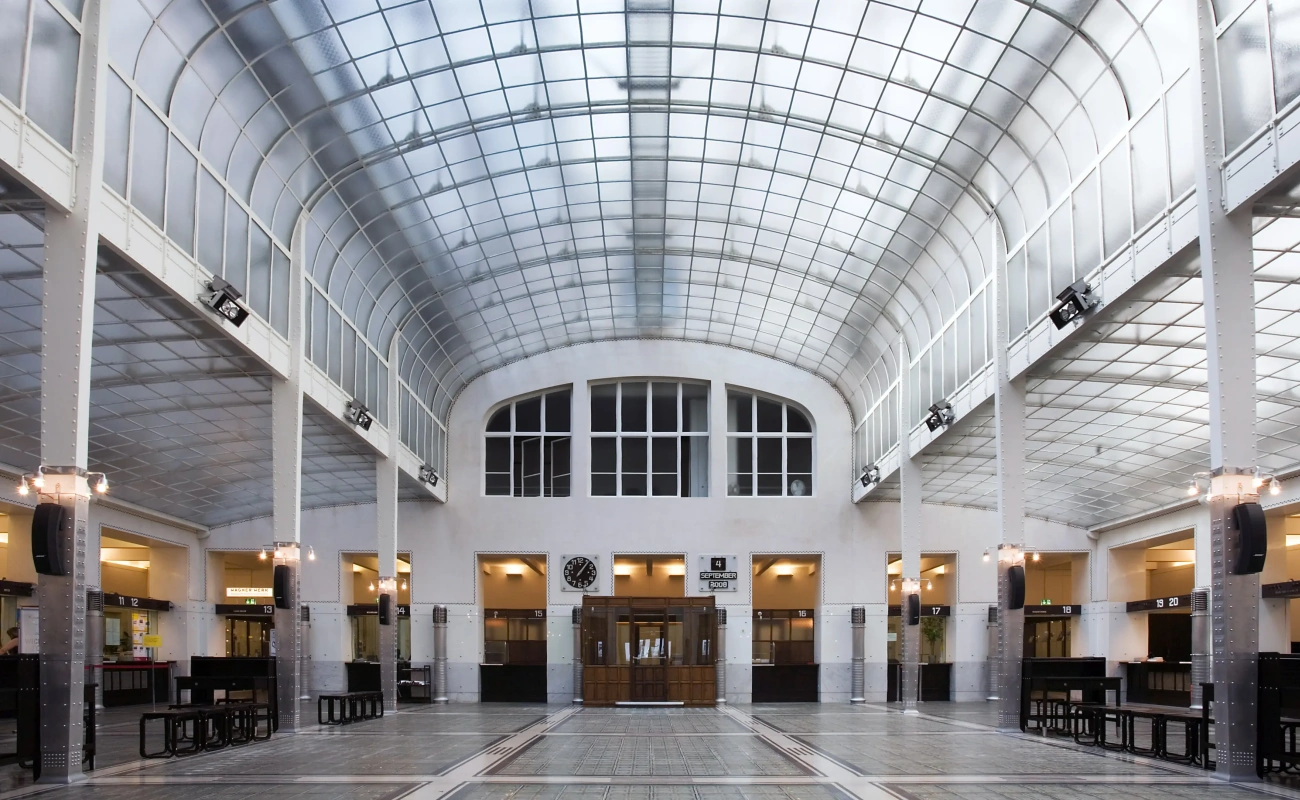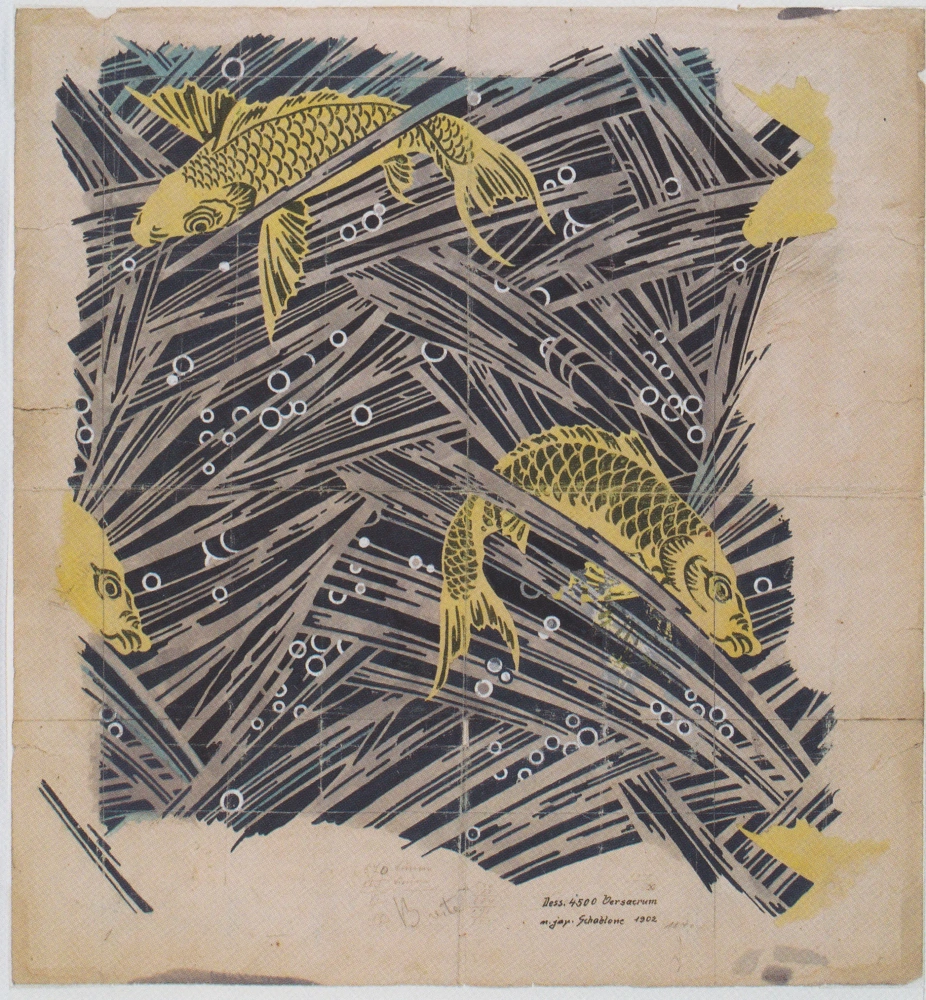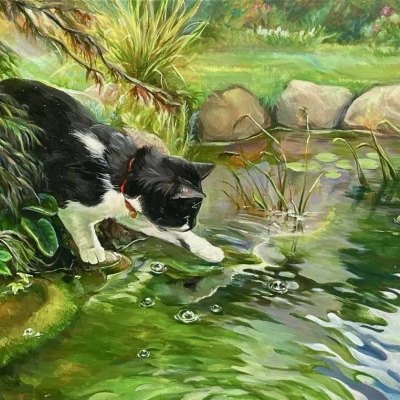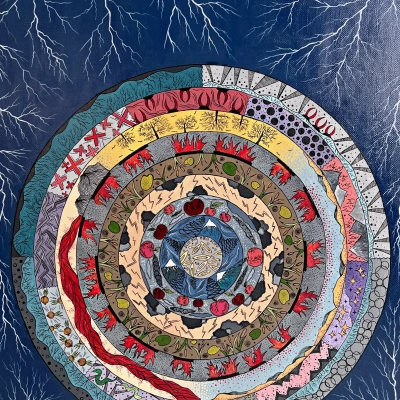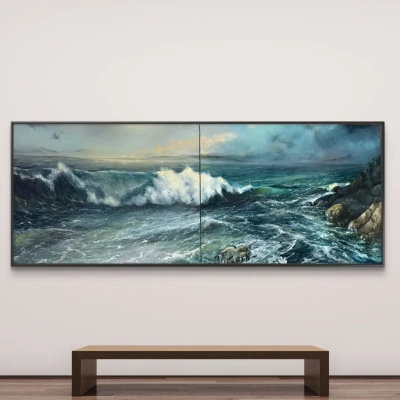In the year 2018 we will enjoy a yearlong city-wide celebration of Viennese Modernism
"Beauty and the Abyss." Vienna praises the extraordinary cultural period with a series of special exhibitions and events devoted to its pioneers: the painters Gustav Klimt and Egon Schiele, the architect Otto Wagner and the universal artist Koloman Moser. These four protagonists all passed away in 1918 and the upcoming celebration is a mark of honor to the centenary of their deaths. All of them left an indelible mark on Vienna around 1900, and many of their works are on permanent display in the city.

Many of the best-known masterpieces of art, architecture and design associated with Vienna all over the world were created during the era of Modernism .
In 1900s, Vienna had a population of two million, making it the world’s fifth largest city and the uncontested cultural capital of Central Europe. The city produced a shimmering fabric woven of contradictions — such as "Dream and Reality" and "Death and Eros" - and was home to some of the most prominent names in the history of European culture. The creative literary, artistic, architectural and musical talent concentrated in the capital of the Austro-Hungarian Empire , which consisted of 15 nations and well over 50 million inhabitants. At the turn of the 20th century the cultural flowering in here was unmatched almost anywhere else.Led by the Habsburgs, the Dual Monarchy veered wildly between beauty and the abyss in the period between 1890 and 1918. Countless new developments in art, literature, architecture, psychology, philosophy and wider society were shaped by ‘Wiener Moderne' or Viennese Modernism . Artists were at the vanguard, and their works shook up the ossifying Habsburg monarchy. The outcome was revolutionary thinking in all areas of life.
Apocalyptic moods grew everywhere in Europe at the turn of the 20th century, but in Vienna they were especially widespread. The local version of Modernity, which has grown into Modernism
, now can be viewed as an implicit expression of the premonition of future catastrophes — the cruelties of the First World War that swept the earth soon after.
The four protagonists of the era: the architect Otto Wagner and the artists Koloman Moser, Gustav Klimt and Egon Schiele were among the numerous individuals that played a defining role in making the fin de siècle period such an important time for art in Vienna and Austria.
The four protagonists of the era: the architect Otto Wagner and the artists Koloman Moser, Gustav Klimt and Egon Schiele were among the numerous individuals that played a defining role in making the fin de siècle period such an important time for art in Vienna and Austria.
Otto Wagner
Born in 1841, Otto Wagner was the elder statesman of the quartet. He embodied the spirit of the times, bringing together entrepreneurialism, urban planning and design. He was much more than an architect. In today’s parlance he was a designer, urbanist and developer.He had an extensive education and knew every trick in the historicist handbook and was even involved in the development of the Ringstrasse at the start of his career. Such a large-scale and expansive urban renewal and planning project right at the heart of a European empire had a significant influence on his creative development.
Otto Wagner took the forward-looking elements of the Ringstrasse period, adopting them as the foundation for a new contemporary era in Vienna. He broke free from the shackles of historicism, casting off any obligation to reference past styles and adorn buildings with ornamentation.
Wagner believed that functional objects required no more and no less design than was required for them to be of effective use. At the same time he came up with an entirely new formal language that reflected the dynamism of the city and its faith in progress. His main works are the Austrian Post Savings Bank, the Church of St. Leopold at Steinhof, the apartment buildings on the Wienzeile, the Court Pavilion in Hietzing and the Stadtbahn Pavilions on Karlsplatz. Parts of his grandiose Stadtbahn railway are still in use today. And his apartment building no. 38 at Linke Wienzeile features on a 100 Euro gold coin as one of Europe’s prime Art Nouveau jewels.
Wagner not only shaped the face of the city — as a professor of architecture at the Academy of Fine Arts he influenced several generations of students.
Wagner believed that functional objects required no more and no less design than was required for them to be of effective use. At the same time he came up with an entirely new formal language that reflected the dynamism of the city and its faith in progress. His main works are the Austrian Post Savings Bank, the Church of St. Leopold at Steinhof, the apartment buildings on the Wienzeile, the Court Pavilion in Hietzing and the Stadtbahn Pavilions on Karlsplatz. Parts of his grandiose Stadtbahn railway are still in use today. And his apartment building no. 38 at Linke Wienzeile features on a 100 Euro gold coin as one of Europe’s prime Art Nouveau jewels.
Wagner not only shaped the face of the city — as a professor of architecture at the Academy of Fine Arts he influenced several generations of students.
Mar 15-Oct 7, 2018: Otto Wagner/Wien Museum Karlsplatz
To mark the 100th anniversary of the death of Otto Wagner (1841−1918), the Wien Museum is dedicating the first major exhibition to this "world capital architect" to be staged for more than 50 years. It presents Wagner’s oeuvre within the context of his contemporaries and detractors, while also looking at the wider cultural, artistic and political environment of his day. Selected pieces from the Wien Museum’s collection — including precious sketches, models, items of furniture, paintings and personal effects — also reflect his international reach.Wien Museum Karlsplatz, Karlsplatz 8, 1040 Vienna, www.wienmuseum.at
Mar 21-Oct 7, 2018: Wagner, Hoffmann, Loos and Furniture Design in Viennese Modernism . Artists, Patrons and Producers/Imperial Furniture Collection
This exhibition presents the work of the key architects of the Wiener Moderne — Otto Wagner, Adolf Loos and Josef Hoffmann — as interior designers and furniture designers and their differing approaches to the two disciplines. Another part of the show looks at the manufacturers behind the furniture and interiors such as Portois & Fix and Gebrüder Thonet as well as their often high-profile patrons (such as Berta Zuckerkandl). Large-format architecture photos by Walter Zednicek show key buildings of Viennese Modernism . Hofmobilliendepot.Imperial Furniture Collection. Andreasgasse 7, 1070 Vienna, www.hofmobiliendepot.at
May 30-Sep 30, 2018: Post Otto Wagner – From the Austrian Post Savings Bank to the Post-Modern/MAK
Otto Wagner’s role as the ‘father of Modernism' provides the focus of this exhibition. It explores the context and interactions between Wagner and other protagonists of early Modernism as well as his influence on his contemporaries, pupils and subsequent generations of architects and designers. The exhibition also uses key works by Otto Wagner to present themed areas which allow visitors to trace his lasting impact on the architecture of Modernism and Post-Modernism.MAK — Austrian Museum of Applied Arts/Contemporary Art, Stubenring 5, 1010 Vienna, www.mak.at
2018 year round: Special guided tours at the White City
Otto Wagner designed the Weisse Stadt (White City) project in Vienna’s 14th district. The development comprised a hospital, Art Nouveau theater and the Church of St. Leopold.Otto Wagner’s White City (available in German, English, French, Italian and Spanish by prior arrangement).
Otto Wagner Church of St. Leopold (public tours in German, no advance registration required, Sat 15:00 and Sun 16:00; also available in English, French, Italian and Spanish by prior arrangement)
Otto Wagner sanatorium, Baumgartner Höhe 1, 1140 Vienna, www.wienkav.at/ows, contact: katharina. baier@wienkav.at
Koloman Moser
Kolo Moser was born in 1868, making him a generation younger than Wagner, and was one of the originators of Viennese Art Nouveau. Today he would be called a graphic designer, as well as a product designer, interior designer and exhibition designer.He collaborated with Otto Wagner in the design of the Stadtbahn buildings. Kolo Moser designed the golden ornamentations on Wagner’s house at Wienzeile 38 and the stained glass windows for Wagner’s Church of St. Leopold.
Moser was the creative force behind the presentation of numerous Secession exhibitions and other shows over the years. From wallpaper to book design, stationery, furnishings, silver vessels, stained-glass windows and posters, he had a hand in everything — including logos, which did not even have a name in Moser’s day. He was also a painter, although this area of his creative output was largely eclipsed by his acclaimed work as a designer.
Moser’s early Jugendstil output is heavily influenced by curved, floral and sometimes riotous shapes, with close echoes of French and Belgian Art Nouveau. He soon went on to develop a comparatively "cool" and pared-down geometric design style. The products that feature it are today regarded as highlights of Viennese Modernism .
Moser’s early Jugendstil output is heavily influenced by curved, floral and sometimes riotous shapes, with close echoes of French and Belgian Art Nouveau. He soon went on to develop a comparatively "cool" and pared-down geometric design style. The products that feature it are today regarded as highlights of Viennese Modernism .
In 1903 Koloman Moser founded Wiener Werkstätte with Josef Hoffmann and a number of other like-minded individuals, to sell decorative art pieces to an exclusive clientele. The overarching notion of the Gesamtkunstwerk or total work of art gave special impetus to Wiener Werkstätte as a productive cooperative that designed and realized entire apartment interiors, ensembles and even palaces down to the very last detail.
A good part of the highly refined design and the effective use of selected and precious materials — Wiener Werkstätte's calling card — bears Kolo Moser’s signature. Works by this universal artist and others can be seen at the MAK — Austrian Museum of Applied Arts/Contemporary Art as well as the Leopold Museum. The MAK is also the owner of the Wiener Werkstätte company archive.
Koloman Moser taught at the Wiener Kunstgewerbeschule (now the University of Applied Arts), which celebrates its 150th anniversary in 2017/18.
A good part of the highly refined design and the effective use of selected and precious materials — Wiener Werkstätte's calling card — bears Kolo Moser’s signature. Works by this universal artist and others can be seen at the MAK — Austrian Museum of Applied Arts/Contemporary Art as well as the Leopold Museum. The MAK is also the owner of the Wiener Werkstätte company archive.
Koloman Moser taught at the Wiener Kunstgewerbeschule (now the University of Applied Arts), which celebrates its 150th anniversary in 2017/18.
Dec 19, 2018-Apr 22, 2019: Koloman Moser/MAK
The Wiener Werkstätte archives, built up by the community of the same name established by Koloman Moser, Josef Hoffmann and Fritz Waerndorfer in 1903, are now owned by the MAK. The aim of this internationally respected group was to bring art into all areas of human existence. Moser, who worked as a painter, graphic artist and craftsman for Wiener Werkstätte until 1907, also taught at the Wiener Kunstgewerbeschule school between 1899 and 1918. This exhibition highlights his extensive output.MAK — Austrian Museum of Applied Arts/Contemporary Art, Stubenring 5, 1010 Vienna, www.mak.at
Kiss
1908, 180×180 cm
Gustav Klimt
Gustav Klimt, born in 1862, also studied at Vienna’s Kunstgewerbeschule. He was thoroughly infused with the spirit of his historic forebears, and seemingly predestined to work on the interiors of the monumental buildings lining the Ringstrasse boulevard. In the early days of his career, he co-founded a company of painters, and worked with Franz Matsch and his brother Ernst Klimt on the opulent interiors of the Burgtheater and the Kunsthistorisches Museum.When a group of ambitious young artists in 1897 decided to part company with the conservative Künstlerhaus and set up their own artists' association known as the Secession, it was Gustav Klimt who was elected their first president. Integrated into Viennese cultural circles and society, he had very close ties with Josef Hoffmann and Kolo Moser. Klimt gradually became a public favorite and portrait artist to the burgeoning middle classes.
Portrait of Sonja Knips II
1898, 145×145 cm
Many of Klimt’s patrons, particularly those that commissioned his portraits of females, came from assimilated Jewish families who had significant capital and shared the inspiration and aesthetics of the modernist era. Klimt’s painting celebrated the upper echelons of a liberal, cosmopolitan culture in which the private and the psychological played a major role.
Klimt’s journey to becoming Austria’s best-known artist was not without some issues: his way of looking at the world and the liberal amounts of nudity in his works caused scandal.
Klimt’s portraits of women elevated Austrian Art Nouveau painting to new heights. Today, his painting is synonymous with a particularly refined and expensive type of Viennese art that has enjoyed enormous popularity in past decades.
Klimt’s journey to becoming Austria’s best-known artist was not without some issues: his way of looking at the world and the liberal amounts of nudity in his works caused scandal.
Klimt’s portraits of women elevated Austrian Art Nouveau painting to new heights. Today, his painting is synonymous with a particularly refined and expensive type of Viennese art that has enjoyed enormous popularity in past decades.
Naked truth
1899, 240×64.5 cm
Feb 13-Sep 2, 2018: Stairway to Klimt. The “Klimt Bridge” + “Nuda Veritas”/KHM
The "Klimt Bridge" constructed in the central stairway of the Kunsthistorisches Museum on the occasion of the 150th anniversary of the painter’s birth 2012 will be erected again in 2018. At a height of 12 meters, it provides a direct view of artworks including the cycle of 13 paintings created by Klimt that adorn the interior between the pillars and arcades. These spandrel and intercolumnar paintings are among the most significant of Gustav Klimt’s early works. At the same time as the Klimt Bridge, Klimt’s large-scale painting "Nuda Veritas" will be on display in the Collection of Greek and Roman Antiquities of the Kunsthistorisches Museum Vienna. It comes from the estate of the critic Hermann Bahr and is being exhibited for the first time in the hall of Doryphoros of the Polykleitos in the context of ancient artworks.Kunsthistorisches Museum Vienna, Maria-Theresien-Platz, 1010 Vienna, www.khm.at
Orchard with Roses
1912, 110×110 cm
2018 Year round: Klimt Villa | Gustav Klimt’s Studio
The ground floor of the Villa used by Klimt as a studio between 1911 and 1918 features a reconstruction of the original furnishings and various media related to Klimt’s work. In all, around 50 oil paintings and hundreds of sketches were created here. The Klimt Villa is the only surviving original studio used by the artist in Vienna.Events and tours in 2018: Gustav Klimt, Life and Work; International Art Nouveau; Japonism; Gustav Klimt and Emilie Flöge; Hietzing — Artist’s Addresses, Architecture, Vienna around 1900 and many others. (Dates on request and on the website).
Klimt Villa / Gustav Klimt’s Studio, Feldmühlgasse 11, 1130 Vienna, www.klimt-atelier.at, www.klimt.at.
Judith and Holofernes
1901, 84×42 cm
Mar 22-Aug 26, 2018: Klimt is not the End. Awakening in Central Europe/Lower Belvedere
The end of the First World War and the deaths of Klimt, Schiele, Wagner and Moser are often seen as the end of an epoch, and of a period in which art flourished. This exhibition illustrates the changes that this fateful break in history actually led to, the restrictions it brought with it, the new perspectives that opened up in its wake and what continued into the new era. It reveals the threads of continuity and change in art between the Danube monarchy and the newly created nation states that arose from its ashes. The show presents around 80 works, including pieces by Klimt, Schiele, Kokoschka, Moser and Egger-Lienz.Belvedere — Lower Belvedere, Rennweg 6, 1030 Vienna, www.belvedere.at
Death and Life
1915, 178×198 cm
Klimt hotspots in Vienna year round:
Belvedere, Secession, Leopold Museum, Wien Museum Karlsplatz, Theater Museum, Burgtheater, Kunsthistorisches Museum Wien, Albertina, MAK — Austrian Museum of Applied Arts/Contemporary Art, Klimt Villa.
Self-portrait with Physalis
1912, 32.2×39.8 cm
Egon Schiele
Egon Schiele (born 1890) was the youngest of the four key figures of Viennese Modernism . His early works were heavily influenced by Klimt. Schiele, like Oskar Kokoschka after him, shared Klimt’s fascination with depictions of women that portrayed their innermost thoughts and sensibilities.Egon Schiele, too, was focused on depictions of the human body, most often of his own. He took the new ideal of the young, if not still adolescent, body and elevated the nu genre to an ecstatic and demonic new level. His erotic and sexual depictions are driven by curiosity free from taboos, as well as stark exhibitionism. The way he made his models pose was new, with characteristic hand arrangements and gestures and a body language that correlated with the radical expressionism of the time.
Two reclining girls
1915
Although Schiele broke ranks with the beautiful curves and elegance of Viennese Art Nouveau, he remained faithful to the underlying lines and opulence of color that defined it. This may account for his popularity in the present day.
Everything produced by Schiele was created by an artist who lived to the age of 28 only. His oeuvre is infused with introspection, self-presentation and a questioning of the body and sexuality — topics that are also at the forefront of present-day contemporary art.
Schiele’s landscapes and pictures of cities are also masterpieces of expressionist art. He left behind a significant and highly respected oeuvre.
Everything produced by Schiele was created by an artist who lived to the age of 28 only. His oeuvre is infused with introspection, self-presentation and a questioning of the body and sexuality — topics that are also at the forefront of present-day contemporary art.
Schiele’s landscapes and pictures of cities are also masterpieces of expressionist art. He left behind a significant and highly respected oeuvre.
Portrait of Wally
1912, 32.7×39.8 cm
Feb 23,-Nov 4, 2018: Egon Schiele. Expression and Lyricism/Leopold Museum
The Leopold Museum at the Museums Quartier has the world’s largest and most important collection of works by Egon Schiele, with more than 40 paintings and around 180 works on paper in its holdings. It also has its own Egon Schiele document center which takes an academic look at this exceptional artist’s oeuvre. His two best-known works — the Portrait of Wally and his Self-Portrait with Physalis — are on display at the Leopold Museum.On the 100th anniversary of Schiele’s death a group of his paintings and graphic artworks will be presented for the first time in a dialog with various handwritten pieces and poems, as well as documents, photographs and other objects from his life. This approach allows the exhibition to look at his personal experience and lyrical talent from a fresh vantage point. The contemporary pieces displayed in parallel reflect on Schiele’s oeuvre from a modern-day perspective. In line with the year’s thematic focus, the Leopold Museum will also be showing works on paper from its extensive repository of graphic works by Klimt alongside various sheets by Koloman Moser.
Leopold Museum, MuseumsQuartier, Museumsplatz 1, 1070 Vienna, www.leopoldmuseum.org
The Embrace (Lovers)
1917, 100×170.2 cm
Oct 19, 2018-Feb 17, 2019: Egon Schiele – Ways of a Collection/Belvedere – Orangery
This exhibition takes a close look at every single work in the Belevedere’s Schiele collection, addressing aspects including their acquisition, composition and subjects. To provide additional context, the paintings are set against individual pre-studies and related works. The show opens up a broader view of Schiele’s pictures and the way he worked, with visualisations and discussions of the ongoing restorative investigations begun at the Belvedere in fall 2016.Belvedere — Orangery, Rennweg 6, 1030 Vienna, www.belvedere.at
Written on materials of WienTourismus (Vienna Tourist Board), wienermoderne2018.info, news.artnet.com, khanacademy.org, grids-blog.com, belvedere.at, leopoldmuseum.org, vienna-unwrapped.com, renaissancetours.com.au. Title illustration: Exhibition "Klimt Persönlich" at Leopold Museum, Vienna, Austria. Photo: Bildit.
Рекомендуем почитать
2 мин.Женщина нашла у себя дома картину да Винчи4 мин.Париж: Брак с птицами1 мин.Натюрморт с цветами1 мин.Открытие юбилейной выставки Дмитрия Санджиева в доме-музее Николая Седнина.
19 мин.Интервью с художником Алексеем Смоловиком. Журнал "Вода живая" 12(декабрь)2024Интервью с художником Алексеем Смоловиком. Журнал "Вода живая" 12(декабрь) 2024Интервью с художником Алексеем Смоловиком. Журнал "Вода живая" 12(декабрь) 2024Интервью с художником Алексеем Смоловиком. Журнал "Вода живая" 12 (декабрь) 2024








